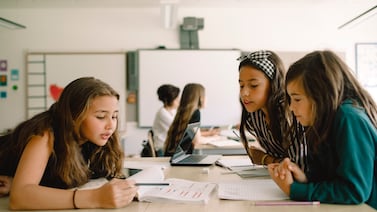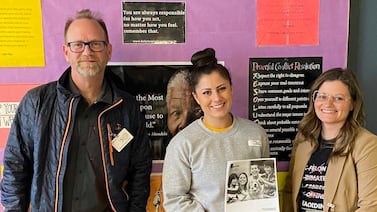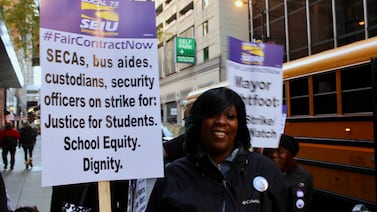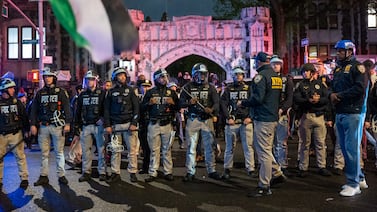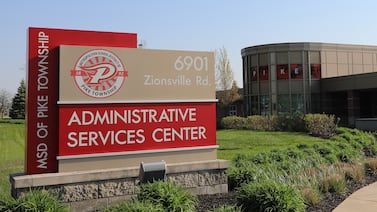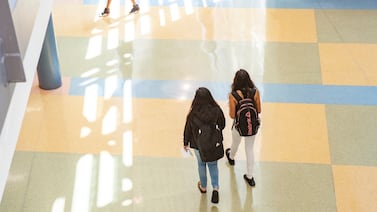Manhattan high school Principal Jeffrey Chetirko recently asked a group of his summer school students to pose for a photo for social media. But they didn’t want anyone to know they were in summer school.
“It kind of broke my heart,” said Chetirko, the principal of the Urban Assembly New York Harbor School on Governors Island, which hosts an annual summer school program for its own students and those from three other small Manhattan high schools.
Stigma surrounding summer school is nothing new. For many students, ending up there can feel like a personal failure, and the name still conjures the image of dejected kids plodding through dull packets of makeup work. For younger kids, the city has poured considerable resources into retooling traditional summer school by launching the heralded Summer Rising program, which combines academic recovery with recreational activities.
For teenagers, the city has focused its efforts on expanding summer employment options, but hasn’t made big changes to its academic summer school offerings.
Summer classes can serve a critical purpose for teens. They can be a fresh start for those who disengaged during the school year and a lifeline for kids at risk of dropping out — missions that have taken on increased urgency as rates of chronic absenteeism and mental health challenges continue to soar among teens.
That’s why educators at the Harbor School are working hard to turn summer school into something students can feel proud of and even look forward to.
Instead of viewing summer school as a source of shame and failure, Chetirko tries to get his students to see it as a mark of resilience — a sign they’re not letting the often formidable challenges that bogged down their school years throw them off track for good.
“I just wish that we lived in a society where we would celebrate [that],” he said.
In some cases, the format of summer school can even offer advantages over the school year in luring back struggling students, educators say.
Scheduling is more flexible, so students can attend school part of the day and still have time to work paying jobs or take care of younger siblings during their off hours.
The change of scenery — not every school offers summer classes, so many students wind up in new buildings — can also be helpful for kids who had negative experiences during the school year.
And the academic work is often more targeted: Students are taking a smaller number of classes at once, and are often in rooms with far lower student-to-teacher ratios.
“It’s like another chance, and it’s not as hard [as the school year],” said 17-year-old Gia Johannesen, a student at Manhattan Early College School for Advertising, who’s taking two classes this summer at the Harbor School. “You just come here, take the classes you need, and there’s no pressure of extreme testing or anything like that.”
Summer plays a central role in COVID recovery efforts
Since the start of the COVID-19 pandemic, city education officials have turned to summer programming as a central piece of efforts to help young people recover academically.
In 2020, former Mayor Bill de Blasio banked on online summer school to help scores of students who’d fallen behind that spring during school closures. But the program quickly spiraled into disappointment for many teenagers, who complained about dense, difficult coursework, and unfamiliar and unavailable teachers.
In fact, high school summer school enrollment fell from over 95,000 in 2019 to just 66,000 on the last day of the program in 2020, according to an education department spokesperson, who acknowledged that methods for tracking enrollment were less reliable for 2020, when students were fully online. Enrollment has steadily bounced back since then, climbing to nearly 92,000 in 2022. Officials didn’t provide enrollment numbers for this summer.
It’s largely up to the high schools hosting academic summer school to design their own programs. Schools have the option to conduct summer courses fully or partly online, though it’s not clear how many schools are currently exercising that option. At the Harbor School, summer school instructors use remote learning only to offer extra practice, not for direct instruction, Chetirko said.
Chetirko says the curricular flexibility has worked to his advantage.
Since the Harbor School hosts summer classes for three other small Manhattan high schools, they can pool resources, while keeping the program small enough that students see familiar faces. If disciplinary issues crop up, designated staffers from the schools of the students involved will step in.
Students have to complete 45 hours of coursework, but teachers have wide latitude to plan their curriculum.
History teacher Frank Schwall said that having fewer students and fewer competing demands from other courses means he can spend more time on basics like making sure all students know how to log into their education department email addresses.
“I don’t have 30 other kids… you definitely have a lot more time to work with the kids, and there’s not as much pressure,” he said.
Schwall also takes advantage of the Harbor School’s unique location on Governors Island, launching a unit on the Statue of Liberty, which is visible from his classroom window, and asking students to rewrite Emma Lazarus’s iconic poem in their own words.
For Johannesen, the high school junior, the slower pace has been a welcome change.
During the school year, it often felt like she was trying to “prove to the state that I’m doing good,” she said. But in summer school, “it’s just proving to myself that I can actually pass algebra.”
Summer school offers a much-needed second chance
Last school year, Johannesen, like an increasing number of teens across the city and country, began feeling overwhelmed by anxiety and depression.
“It was just really, really difficult to just get out of bed and go to class,” she said. By the time Johannesen met with a therapist at a clinic in her school and began connecting the dots between her mental health and school attendance and seeking treatment, she’d already missed too much class to pass several of her courses.
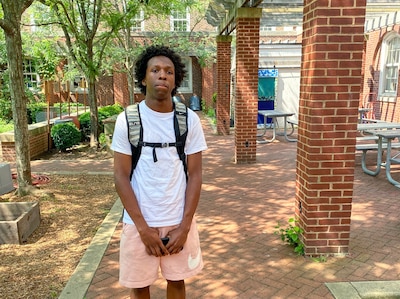
Stories like Johannesen’s have become more common in the wake of the pandemic. In the 2017-2018 school year, 31% of New York City high school juniors ended the school year marked “chronically absent,” or having missed more than 10% of the school year. By 2021-2022, the most recent year for which data was available, 43% of high school juniors ended the year chronically absent, according to education department data.
Prince Allen, 16, conceded that he spent more time than he should have “goofing off” during the school year. Allen, a rising junior at The Urban Assembly Maker Academy, said he’s struggled to readjust to being back in school after extended stretches of virtual learning during the pandemic.
“I feel like that’s the reason I’m not so much on task,” he said. “It’s just you felt separated and I felt like we learned nothing. You just feel like you don’t want to be in that space.”
Coming to summer school has allowed him to make up credit without sacrificing other summer plans. He still works every day from 4 p.m. to 10 p.m. helping run a basketball tournament through the city’s Summer Youth Employment Program.
Chetirko acknowledges that many of the advantages of summer school are difficult to transfer over into the school year: scheduling doesn’t come with the same flexibility and the low teacher-to-student ratios are impossible to maintain. Some of the kids who flourished during summer school will likely struggle again during the school year and return to summer school next year. But Chetirko doesn’t see that as a failure, or a waste of time.
While some students are embarrassed to be repeat summer school attendees, Chetirko sees it differently. “If you weren’t successful in that first summer, you may not have been here” for a second summer, he reasons. “You may have already dropped out.”
Michael Elsen-Rooney is a reporter for Chalkbeat New York, covering NYC public schools. Contact Michael at melsen-rooney@chalkbeat.org.



